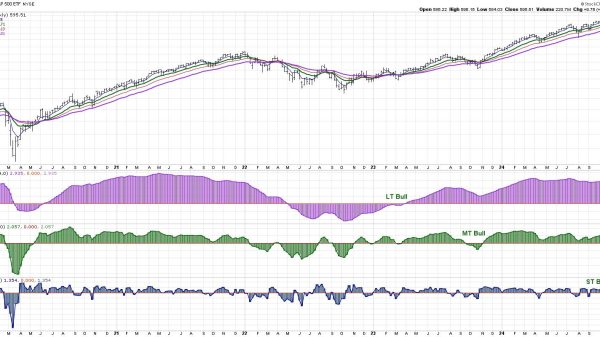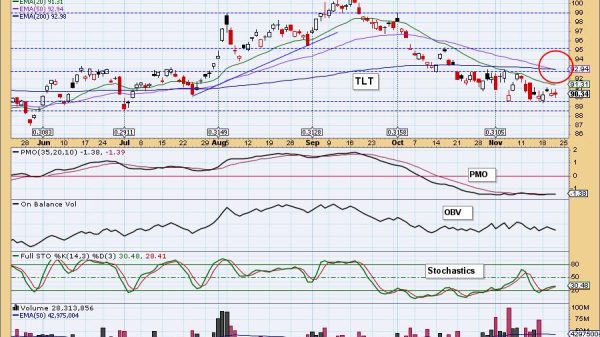There’s no denying the strength that the mega cap growth names have exerted on the equity markets in 2024. With their outsized weight in the major equity averages, and their strong performance into November 2024, the Magnificent 7 stocks in many ways reflect the investor optimism that has been much of the story of this bull market.
But with these leading growth names rotating lower this week, pushing the Nasdaq 100 down 3.4% and the S&P 500 down 2.1% through Friday’s close, we need to reconsider the sustainability of the uptrend phase through year-end 2024. We can easily group the eight stocks, which I call the “Magnificent 7 and Friends”, into three distinct buckets. Let’s review the technical configurations for these stocks, and focus on what levels could help us confirm a new market trend.
The Breakout Names, Featuring NVDA
Three of these eight leading growth names have already broken to a new all-time high in Q4, and while Netflix, Inc. (NFLX) and Amazon.com, Inc. (AMZN) both deserve our attention, I think the chart of NVIDIA Corp. (NVDA) perhaps best illustrates what we’re seeing with these top performers.
These three are in confirmed uptrends, as defined by Charles Dow’s original definition of higher highs and higher lows. So the analysis here is simple: as long as that uptrend persists, the charts are in good shape. For NVDA, that means a “line in the sand” around $132, which lines up with late October swing low as well as the 50-day moving average.
During an uptrend phase, stocks will often pull back to an ascending 50-day or 10-week moving average. So if charts like Nvidia are able to hold this key short-term trend barometer, then the uptrend remains in place. But if these first three stocks fail to hold expected support, that could provide a key market tell as the “generals” would show signs of weakness.
The Consolidating Charts, Featuring AAPL
Three of the eight charts on this list are testing short-term resistance levels, with Meta Platforms, Inc. (META) testing the $600 level as a prime example. But we’ll focus today on Apple, Inc. (AAPL), which has spent the last four months failing to breakout above its July high around $237.

Quite simply, the chart of AAPL is at best “neutral” until and unless it can demonstrate a confirmed break above the July peak. On top of that, we can see the RSI has failed to push above the 60 level on short-term rallies. In fact, with the RSI basically rangebound between 40 and 60, this stock represents an absence of momentum and an equilibrium of buyers and sellers.
For charts like these, I’m reminded of Jesse Livermore’s famous quote, “There is time to go long, time to go short, and time to go fishing.” When the chart is not providing a clear signal to the upside or downside, it’s usually best to find opportunities elsewhere. But if three of these stocks are failing to break to new highs, that suggests limited upside for the S&P 500 and Nasdaq 100.
The Wild Cards, Featuring MSFT
Now the final two charts are sort of in an “other” bucket, with Tesla Inc. (TSLA) a notable outlier with its exceptionally strong upside rally post-elections, and then an equally dramatic decline over the last week. But I think Microsoft Corp. (MSFT) provides a more compelling technical configuration, given that it’s one of the only growth names on this list that is actively testing price support.

If you connect a trendline from the July peak to the September high, you’ll see that MSFT had a failed breakout above that trendline in late October then again earlier this week. In bullish market phases, charts like this usually follow through on breakouts. But when clear technical breakouts don’t see enough follow-through, that can often be an indication of a wider risk aversion and lack of willing buyers.
With Microsoft in particular, it’s all about the $406 level, which represents a 38.2% retracement of the 2023-24 uptrend phase. There have been numerous tests of this support level over the last three months, and a break below this level could indicate a larger theme of distribution in the equity markets. Bear phases are always marked by stocks being unable to hold key price support!
For a deeper dive into these three charts, along with the rest of the Magnificent 7 and Friends, head on over to my YouTube channel!
RR#6,
Dave
PS- Ready to upgrade your investment process? Check out my free behavioral investing course!
David Keller, CMT
President and Chief Strategist
Sierra Alpha Research LLC
Disclaimer: This blog is for educational purposes only and should not be construed as financial advice. The ideas and strategies should never be used without first assessing your own personal and financial situation, or without consulting a financial professional.
The author does not have a position in mentioned securities at the time of publication. Any opinions expressed herein are solely those of the author and do not in any way represent the views or opinions of any other person or entity.


